INTRODUCTION– A vast area of land with thick density of trees and bushes is called forest. Forest is the natural habitat of variety of plants and animals. There are so many benefits of forests. The wildlife is dependent on forest. We get various products from forests. Various types of microbes, insects, reptiles, birds, animals etc live in forest. We get mesmerized to listen various kinds of sounds in the forest.
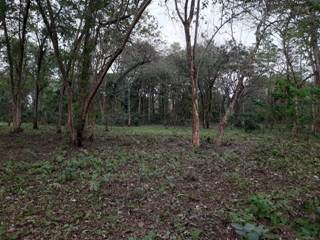
Crown– The branches of a tree above the stem is called its crown. The shape and size of crowns of different plants vary from each other. The crowns of tall, medium and small trees create different vertical layers in the forest. The creeper and climber plants are also found in forests.
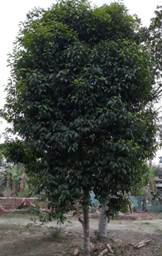
Canopy-The branches of tall trees that look like as a roof in the forest is called canopy.
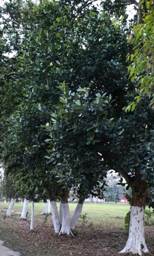
Understory– The layer of shorter trees that grow under the shade of canopy as second layer in forest is called understory.
Forest floor-The dark and shady ground area of forest where decomposition of leaves, fruits, seeds, bark, and fallen twigs goes on is called forest floor. The bacteria, fungi, worms, and insects help in decomposition of such organic natural things. As a result of decomposition, heat is produced. So, forest floors feel slight warm upon touch. The simple organic manure helps in germination and growth of seedlings and saplings.
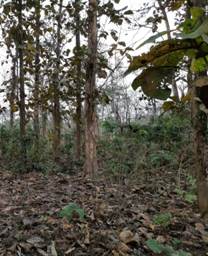
IMPORTANCE OF FOREST– The forests are useful in many ways-
1. Forest as a habitat-The forest is habitat of wild animals and plants.
2. Forest as a resource-Forests provide different resources. The furniture wood, coir, natural rubber, tannin, lac, dyes, sealing wax, gum etc are obtained from forest. Forests provide honey, fruits and seeds. Sandalwood, eucalyptus oil, pine oil etc are some other products used in making of soaps, cosmetics and medicines.
3. Forest as air purifier-Plants take carbon dioxide and release oxygen during photosynthesis. This oxygen is utilized by plants and animals both during respiration. Forests help in maintaining the ratio of oxygen and carbon dioxide in the atmosphere. Forests are called as ‘lungs of the earth’.
4. Forests in maintaining atmospheric humidity and rainfall- The plants loose a huge amount of water through their leaves by the process called transpiration. Due to it atmospheric humidity increases and rainfall pattern is maintained in that area. The local climate is maintained and chances of drought reduce.
5. Forest as source of fodder- In the forest grasses, herbs, shrubs, trees are good source of fodder for livestocks. The wild grazing animals are entirely dependent on forest.
6. Forest as source of firewood- Firewood is required for cooking and heating processes. It is used in homes and industries. The firewood counts about 35-40 % of total energy consumed in the world. It is convenient but cause pollution on burning.
6. Forests as source of medicine-The plants are source of many medicines in treatment of diseases and ailments. The forest plants are used in preparing medicines. The ayurvedic, allopathic, homeopathic, unnani systems of medicines use about 70-100 % plant based medicines. The medicinal plants are obtained from forests as well as cultivated. Quinine is a medicine obtained from Cinchona tree is used in treatment of malaria disease. Eucalyptus oil is used in relieve of pain and used in balms.
7. Forests in prevention of oil erosion- The running water and fast blowing wind carry away the fertile top soil. The removal of topsoil by water, wind, animals is called as soil erosion. Forests help in checking the soil erosion by binding the soil particles. Forests in hilly and sloppy areas particularly play crucial role in checking soil erosion.
FORESTS AS A DYNAMIC ENTITY – The wild animals are dependent on forests for survival. The moss, ferns, herbs, shrubs and fungi grow well in forest. The herbivores, carnivores and omnivores are found in forest. Herbivores eat grasses, carnivores eat herbivores and omnivores eat both plant and animal based foods. So, transfer of food in form of energy occurs at many levels. The transpiration, absorption of water and minerals from soil, photosynthesis, respiration, flowering, fructification, pollination, transport of water and minerals, food, nutrient recycling etc always go on in the forest. So, forests are a ‘dynamic living entity’.
FOOD CHAIN-The grasses and green plants entrap the solar energy and change them into chemical energy. They are called autotrophs or producers. They prepare their own food by photosynthesis. Those animals which eat plants or plant products or other animals are called consumers. Consumers cannot do photosynthesis. Therefore they are dependent on plants or other animals for food. Consumers are also called as heterotrophs. Those animals which eat herbs or plant products are called herbivores. Herbivores are primary consumers or primary carnivores. The primary consumers are eaten by secondary consumers or tertiary consumers. Tertiary consumers are mostly top consumers or carnivores. So, the chain of eaters and being eaten is called as food chain. In a food chain there is transfer of energy in form of food at different levels. In transfer of energy ‘Lindeman 10% rule’ is applied.
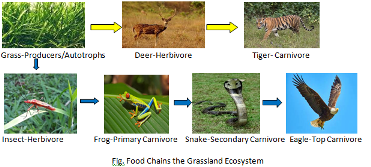
| S.N. | TYPE OF CONSUMER | EXAMPLES |
| 1 | Primary Consumer | Grasshopper, Mouse, Rabbit, Sheep, Goat, Cow, horse, Deer, Elephant, Bison, Zebra, Monkey etc. |
| 2 | Secondary Consumer | Frog, Lizard, Birds, Fox, Jackal, Snakes etc. |
| 3 | Tertiary Consumer | Duck, Eagle, Hyena, tiger, lion, Alligator, Crocodile etc. |
The dead plant parts, plants and animals are decomposed by decomposers like bacteria and fungi. The nutrients obtained after decomposition are mixed with soil. It helps in recycling of nutrients. The decomposers utilize negligible amount of energy. Decomposers are not considered as a part of food chain.
FOOD WEB– Some animals eat more than one kind of food. Therefore, in forest different types of food chains are not separate but remain interlinked with each other. The complex network of interlinked food chains is called food web. In it transfer of energy occurs at multiple levels.
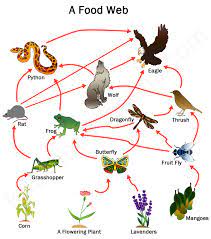
Fig. A simple Food Web
TYPES OF FOREST IN INDIA-The natural vegetation of India are basically tropical forest. There are five types of forests in India-
1. Tropical Rain forest- They are evergreen forests found in the regions of more than 200 cm/annum rainfall. Such forests are warm and wet throughout the year. They do not shed their leaves. The tall trees in this forest are 60 feet or more in height. The important plants of this forest are mahogany, wild rubber, cinchona, rosewood, bamboo etc.
Location- North-East states, Western Ghats, West Bengal, Orissa, Andaman and Nicobar
2. Tropical Deciduous Forest- They are monsoon forest found in the region of 75 to 200 cm/annum rainfall. They cover large part of country. They shed their leaves once in summer and form new leaves in rainy season; therefore, it is also called as deciduous forest. The important trees of this forest are teak, sal, sandalwood, shiham etc.
Location- Madhya Pradesh, Jharkhand, Orissa, West Bengal, Bihar etc.
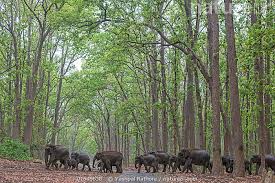
3. Coniferous Forest- They are mountain forest found in the Himalayan regions states and higher hills of peninsular India. They are mainly tall trees having needle like leaves. They are conical in shape also. Their wood is soft and not so good for furniture. They are used in making of paper and matchsticks. The plants are Pine, Cedrus, Fir, Texus etc.
Location- Jammu and Kashmir, Laddakh, Himachal Pradesh, Uttarakhand, Uttar Pradesh, Bihar, North-East states Nilgiri Mountain etc.
4. Thorn Forest-They are forest of thorny bushes, shrubs and short trees. They are found in the regions where less than 75 cm / annum rainfall. The plants found in this forest are babul, date palm, khair, kikar, opuntia etc.
Location- Rajasthan, Madhya Pradesh and Gujarat
5. Tidal Forest- These forests are found in delta areas where rivers meet with the sea. The area is tidal swamp and with saline brackish water. The vegetation in this forest is of mangrove plants. Rhizophora, sundari tree etc.
Location- Sundarban, West Bengal,
DEFORESTATION- Forest is a natural resource. The clearing of forests on large scale and using that cleared land for other purposes is called deforestation.
Causes for deforestation-
1. Encroaching forest land for cultivation and other purposes.
2. Making houses, developing colonies, road, airport and factories.
3. Using wood as fuel or making furniture.
4. For mining, ores extraction, petroleum extraction etc.
5. Some natural causes of deforestation are forest fires and drought.
Consequences of deforestation-The consequences of deforestation are
1. Soil erosion and decrease in soil fertility leading to desertification.
2. Rise in the temperature and pollution level contributing to global warming.
3. Increase in the level of carbon dioxide in the atmosphere leading to global warming.
4. Climate change
5. Lowering of ground water level.
6. Disturbs the biodiversity.
7. Decrease in rainfall and water cycle leading to drought.
8. Shortage of forest products
9. Decrease in the water holding capacity of soil causing floods.
10. Loss of habitat
CONSERVATION OF FOREST-The bad impacts of deforestation can be minimized using following measures-
1. Reforestation– Reforestation is the restoring of destroyed forests by planting new trees. We should plant at least as many trees as we cut. We have already caused a lot of damage to our forests. If we have to regain our green wealth, reforestation is the only option.
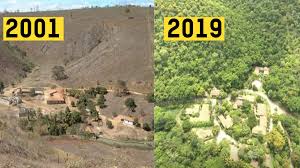
2. Afforestation- The process of planting of trees or sowing of seeds in barren land to grow the forest is called afforestation. It is done by forest department, N.G.Os and social forestry. People awareness is created by celebrating Van Mahotasava.
3. Stopping mining in forest area- The mining of coal, metals, diamond affects the forests. The government laid rules should be followed and illegal mining should be immediately stopped.
4. Preventing overgrazing– The big cattles cause destruction of forest due to overgrazing. The farmers should be encouraged to keep and feed their cattles in their stalls.
5. Prevention of forest fire- Forest fire is one of the major factors of loss of forests. The causes of forest fire may be- natural like volcanic eruption, heat produced due to rubbing of branches, lightening and human causes like campfire, burning of forest area for shifting cultivation and throwing of lit cigarette. The fire retardant materials and dropping of water from helicopters can
CHIPKO MOVEMENT– This movement started in 1970s against cutting of trees in Reni Forest area in Chamoli district of Uttarakhand. The villagers hugged the trees when wood cutters came to cut the trees. Due to this the name ‘chipko’ was coined. Chipko means to stick. The famous personalities of this movement were Gaura Devi, Sudeshna devi, bachani devi, Sunderlal Bahuguna, Chandi Prasad Bhatt etc. Necessary steps were taken to protect the trees from cutting down with the intervention of government.
EXERCISE QUESTIONS-
Q.1 Explain how animals dwelling in the forest help it grow and regenerate.
Ans- Following important things are done by animals dwelling in forest to help it grow and regenerate-
(a) The animal dung and dead animals are decomposed into humus. The humus helps in increasing soil fertility.
(b) Free living bacteria, symbiotic bacteria, algae and fungi along the roots of higher plants help in supplying nutrients to the plants. e. g.-Rhizobium bacteria forms symbiotic association with roots of leguminous plants.
(c) Birds, elephants, quarrels etc like animals help in seed dispersal in forest.
Q.2 Explain how forests prevent floods.
Ans-The roots of plants goes deep inside the soil making some space in the soil particles. The rain water goes inside the earth by infiltration. Thus, the probability of flood is prevented.
Q.3 What are decomposers? Name any two of them. What do they do in the forest?
Ans- Decomposers are such organisms which decompose the dead plants and animals in nature and help in nutrient recycling. e. g.-Bacteria and Fungi .They consume negligible amount of energy and act at all levels of food chain. Decomposers are not considered as a part of food chain.
Q.4 Explain the role of forest in maintaining the balance between oxygen and carbon dioxide in the atmosphere.
Ans- Oxygen gas is taken by plants and animals during respiration to release energy (A.P.T.) and carbon dioxide gas. During photosynthesis, the carbon dioxide gas is taken by plants. As a result of photosynthesis, oxygen is formed. The cyclic rotation of oxygen due to respiration and photosynthesis is called oxygen cycle. It maintains the balance of oxygen in environment.
Q.5 Explain why there is no waste in a forest?
Ans- The plant and animal wastes are decomposed into dark coloured humus by decomposers like bacteria and fungi. The humus is rich in nutrients. Humus is utilized by germinating seeds, growing saplings and plants. Thus there is no waste in the forest.
Q.6 List five products we get from forests.
Ans- Following are the five products obtained from forest-
a. Timber and fire wood
b. Medicines
c. Gum
d. Oil
e. Fruits
Q.7 Fill in the blanks:
(a) The insects, butterflies, honeybees and birds help flowering plants in ……………
(b) A forest is a purifier of …………………..and ……………………..
(c) Herbs form the ………………………layer in the forest.
(d) The decaying leaves and animal droppings in a forest enrich the …………………..
Ans- (a) pollination
(b) air, water
(c) lowest
(d) soil
Q. 8 Why should we worry about the conditions and issues related to forests far from us?
Ans- Deforestation is the main issue in front of forests. Following are the reasons which make us worry about the conditions and issues related to forests far from us –
(a) Rise in the temperature and pollution level contributing to global warming.
(b) Increase in the level of carbon dioxide in the atmosphere leading to global warming.
(c) Climate change
(d) Decrease in rainfall and water cycle leading to drought.
All these conditions and issues impact our life inspite of being far away. So, we fill worry to know such things.
Q.9 Explain why there is a need of variety of animals and plants in a forest?
Ans- Plants and animals are needed in a forest to maintain the flow of energy at different levels. They maintain each other’s balance. The grasses and plants trap the sunlight and prepare the food through photosynthesis. They are eaten by herbivores. The herbivores are eaten by carnivores. In this way, through food web there is transfer of energy. So, there is a need of variety of animals and plants in a forest.
Q.10 Which of the following statements is not correct?
(a) Forests protect the soil from erosion.
(b) Plants and animals in a forest are not dependent on one another.
(c) Forests influence the climate and water cycle.
(d) Soil helps forests to grow and regenerate.
Ans-(b) Plants and animals in a forest are not dependent on one another.
Q.11 In the given figure, the artist has forgotten to put the labels and directions on the arrows. Mark the directions on the arrows and label the diagram using the following labels: clouds, rain, atmosphere, carbon dioxide, oxygen, plants, animals, soil, roots, water label
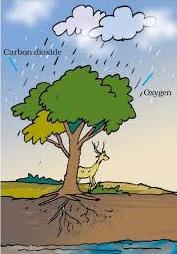
Ans-

Q.12 Which of the following is not a forest product?
(i) Gum (ii) Plywood
(iii) sealing wax (iv) Kerosene
Ans-(iv) Kerosene
Q13 Micro-organisms act upon the dead plants to produce-
(i)sand (ii) mushroom
(iii) humus (iv) wood
Ans-(iii) humus
© www.vkscience.com
[url=https://newfasttadalafil.com/]Cialis[/url] Buy Effexor Quick Shipping Cjirld Legally Levaquin Levotab Medication Cialis Kamagra Oral Jelly 10 Pfmsct https://newfasttadalafil.com/ – legit cialis online